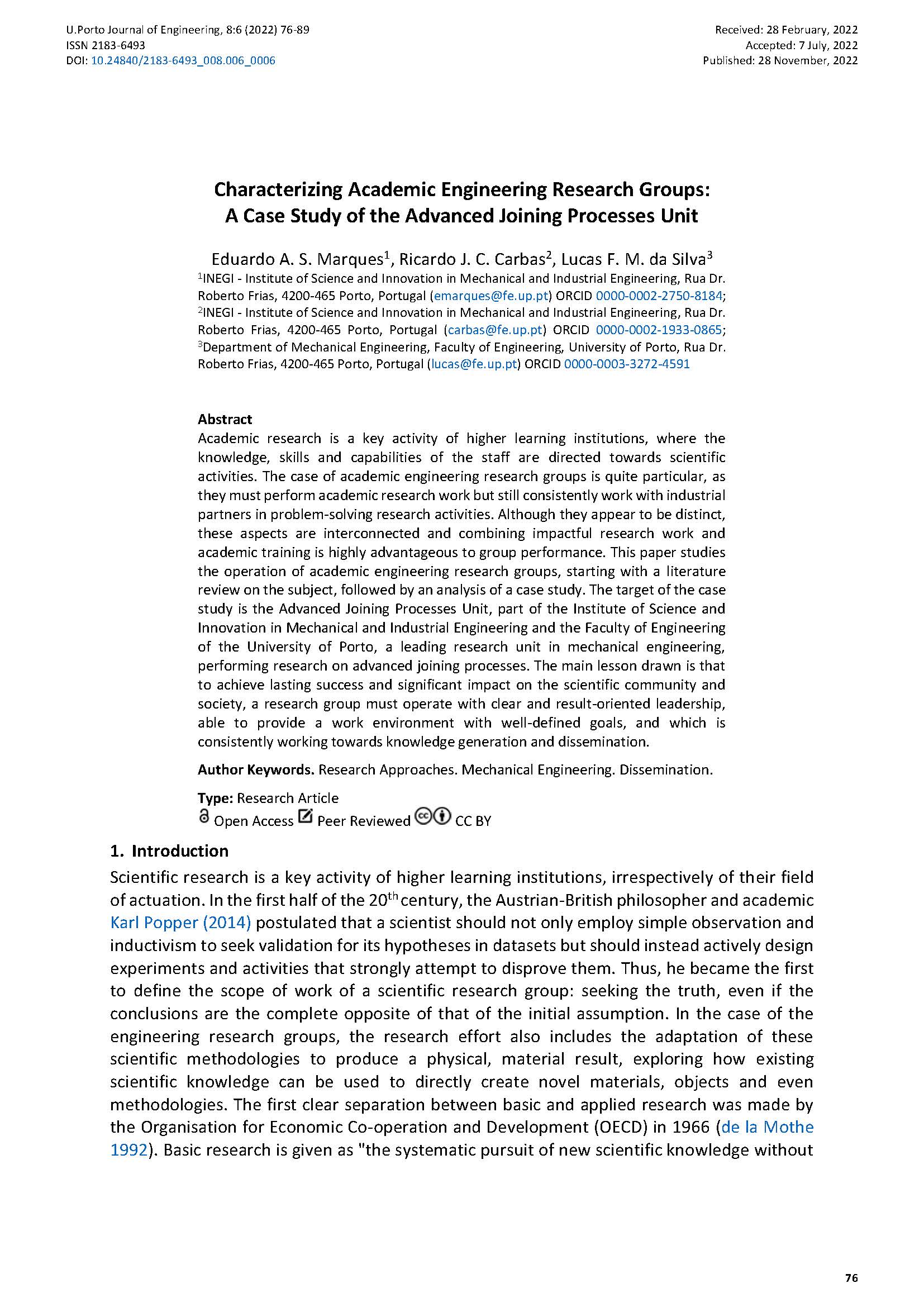Characterizing Academic Engineering Research Groups A Case Study of the Advanced Joining Processes Unit
Main Article Content
Abstract
Academic research is a key activity of higher learning institutions, where the knowledge, skills and capabilities of the staff are directed towards scientific activities. The case of academic engineering research groups is quite particular, as they must perform academic research work but still consistently work with industrial partners in problem-solving research activities. Although they appear to be distinct, these aspects are interconnected and combining impactful research work and academic training is highly advantageous to group performance. This paper studies the operation of academic engineering research groups, starting with a literature review on the subject, followed by an analysis of a case study. The target of the case study is the Advanced Joining Processes Unit, part of the Institute of Science and Innovation in Mechanical and Industrial Engineering and the Faculty of Engineering of the University of Porto, a leading research unit in mechanical engineering, performing research on advanced joining processes. The main lesson drawn is that to achieve lasting success and significant impact on the scientific community and society, a research group must operate with clear and result-oriented leadership, able to provide a work environment with well-defined goals, and which is consistently working towards knowledge generation and dissemination.
Downloads
Article Details

This work is licensed under a Creative Commons Attribution 4.0 International License.
Authors who publish with this journal agree to the following terms:
- Authors retain copyright and grant the journal right of first publication with the work simultaneously licensed under a Creative Commons Attribution License that allows others to share the work with an acknowledgement of the work's authorship and initial publication in this journal.
- Authors grant the journal the rights to provide the article in all forms and media so the article can be used on the latest technology even after publication and ensure its long-term preservation.
- Authors are able to enter into separate, additional contractual arrangements for the non-exclusive distribution of the journal's published version of the work (e.g., post it to an institutional repository or publish it in a book), with an acknowledgement of its initial publication in this journal.
- Authors are permitted and encouraged to post their work online (e.g., in institutional repositories or on their website) prior to and during the submission process, as it can lead to productive exchanges, as well as earlier and greater citation of published work (See The Effect of Open Access).

